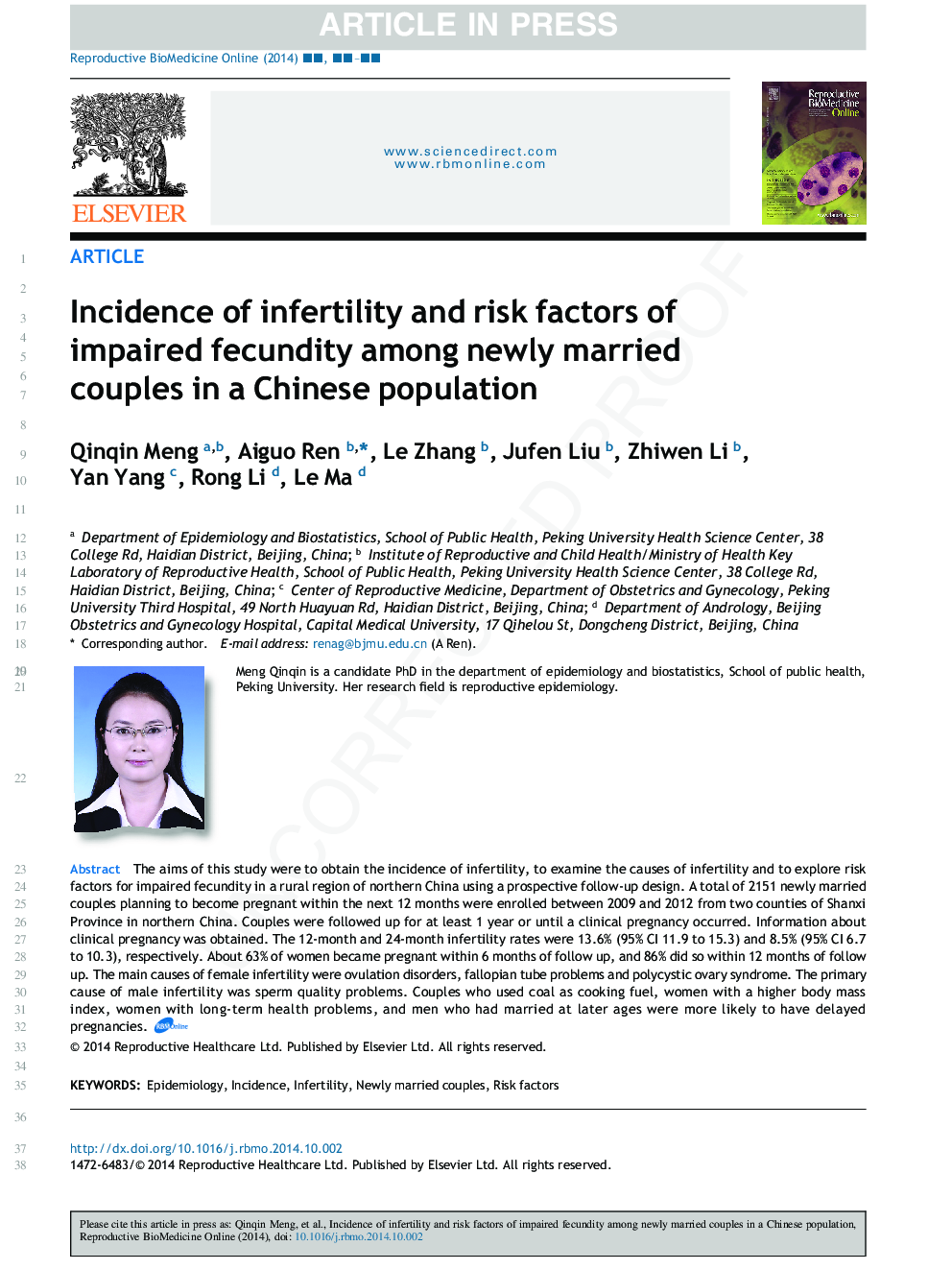| Article ID | Journal | Published Year | Pages | File Type |
|---|---|---|---|---|
| 6188943 | Reproductive BioMedicine Online | 2015 | 9 Pages |
Abstract
The aims of this study were to obtain the incidence of infertility, to examine the causes of infertility and to explore risk factors for impaired fecundity in a rural region of northern China using a prospective follow-up design. A total of 2151 newly married couples planning to become pregnant within the next 12 months were enrolled between 2009 and 2012 from two counties of Shanxi Province in northern China. Couples were followed up for at least 1 year or until a clinical pregnancy occurred. Information about clinical pregnancy was obtained. The 12-month and 24-month infertility rates were 13.6% (95% CI 11.9 to 15.3) and 8.5% (95% CI 6.7 to 10.3), respectively. About 63% of women became pregnant within 6 months of follow up, and 86% did so within 12 months of follow up. The main causes of female infertility were ovulation disorders, fallopian tube problems and polycystic ovary syndrome. The primary cause of male infertility was sperm quality problems. Couples who used coal as cooking fuel, women with a higher body mass index, women with long-term health problems, and men who had married at later ages were more likely to have delayed pregnancies.
Related Topics
Health Sciences
Medicine and Dentistry
Obstetrics, Gynecology and Women's Health
Authors
Qinqin Meng, Aiguo Ren, Le Zhang, Jufen Liu, Zhiwen Li, Yan Yang, Rong Li, Le Ma,
